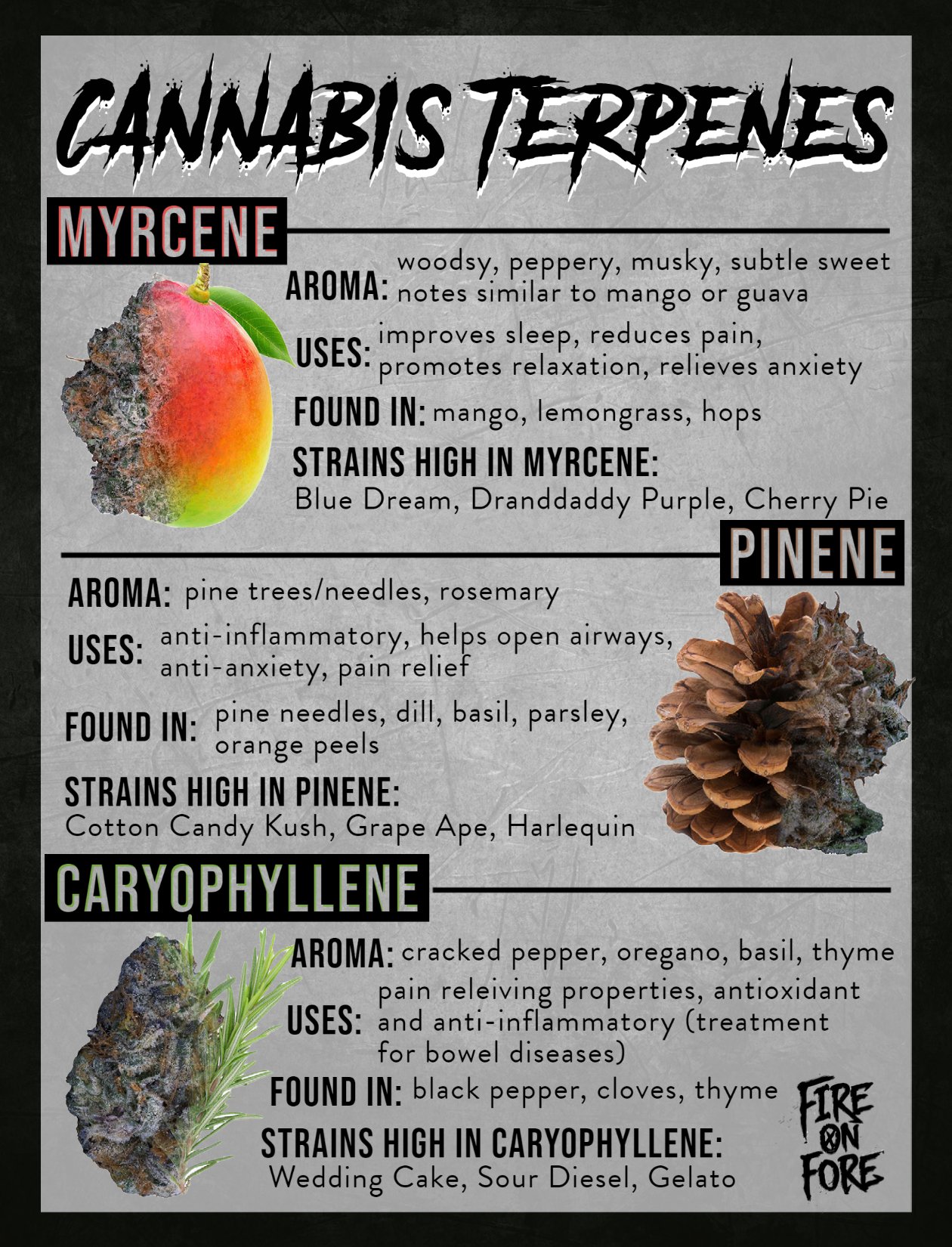Know your Terps
In cannabis, TERPENES are organic compounds that contribute to the plant's distinct aroma and flavor profile. They are secreted in the resin glands of the cannabis flowers, along with cannabinoids such as THC (tetrahydrocannabinol) and CBD (cannabidiol).
Terpenes in cannabis serve several important purposes:
Aroma and Flavor: Terpenes are responsible for the wide range of fragrances found in different cannabis strains, such as citrus, pine, berry, or earthy scents. These aromatic compounds also contribute to the unique flavors experienced when consuming cannabis.
Entourage Effect: Terpenes interact synergistically with cannabinoids, enhancing or modulating their effects in what is known as the entourage effect. Different combinations of terpenes and cannabinoids can produce varying physiological and psychological responses. For example, some terpenes may promote relaxation, while others may have uplifting or energizing effects.
Therapeutic Potential: Terpenes have been found to possess potential therapeutic properties on their own. For instance, some terpenes have demonstrated anti-inflammatory, analgesic, anxiolytic (anxiety-reducing), or sedative properties. When combined with cannabinoids, these terpenes may contribute to the overall therapeutic potential of cannabis.
Differentiation of Strains: Terpene profiles can help differentiate cannabis strains and guide consumers in selecting strains that suit their preferences or desired effects. For example, strains high in the terpene myrcene may be associated with relaxation, while strains high in limonene may be more uplifting.
It's important to note that terpenes are not exclusive to cannabis and can be found in various plants. However, they play a significant role in the overall cannabis experience, influencing both the sensory aspects and potential therapeutic effects of the plant.
There are numerous terpenes found in cannabis, but here are some of the primary terpenes commonly identified in cannabis strains:
Myrcene: This is one of the most abundant terpenes in cannabis. It has an earthy, musky aroma and is also found in hops. Myrcene is associated with sedative effects and is believed to contribute to the "couch-lock" sensation.
Limonene: As the name suggests, limonene has a citrusy, lemon-like scent. It is also found in various citrus fruits. Limonene is associated with uplifting and mood-enhancing effects and may have potential anti-anxiety and anti-depressant properties.
Pinene: Pinene has a distinctive pine aroma and is found in pine trees, as well as some herbs. It is believed to have anti-inflammatory properties and may help with focus and alertness. There are two types of pinene: alpha-pinene and beta-pinene.
Caryophyllene: Caryophyllene has a spicy, peppery scent and is also found in black pepper, cloves, and other spices. It binds to the cannabinoid receptors in the body, making it unique among terpenes. Caryophyllene is associated with anti-inflammatory and analgesic effects.
Linalool: Linalool has a floral, lavender-like aroma and is found in lavender, as well as other flowers and spices. It is believed to have relaxing and sedative properties and may help with anxiety and stress relief.
Humulene: Humulene has an earthy, woody aroma and is also found in hops. It is associated with anti-inflammatory effects and may have appetite-suppressing properties.
These are just a few examples, and there are many more terpenes present in cannabis, each with its own unique scent and potential effects. The combination and concentration of terpenes in a particular cannabis strain contribute to its specific aroma, flavor, and potential therapeutic effects.

